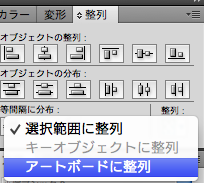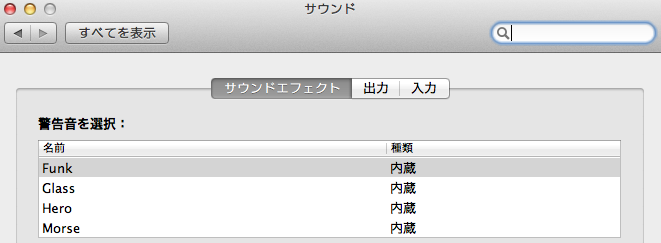更新したファイルに該当するタスクだけ走らせる Gruntfile
grunt-contrib-watch って便利なんですが、監視ファイルが多くなる=走る処理が多くなるとどうしても時間がかかってしまいます。それでなんだか効率が落ちてたりするわけなんですが、grunt-este-watch が幸せということを聞いて、ぼくも幸せになりたいと思いやってみました。
更新されたファイルに関係ないタスクが走るのが良くないわけで、ちゃんと個別にタスクを走らせたら良いわけですね。ということで、以下にサンプルを置いておきます。とりあえず便宜上なので、ファイル名に意味はありません。
やりたいこと
前提
監視対象のファイルは全て ./src/ に入ってるものとします。
利用するプラグイン
Gruntfile.coffee
module.exports = (grunt) ->
pkg = grunt.file.readJSON 'package.json'
grunt.initConfig
compass:
dev:
options:
config: 'config.rb'
environment: 'development'
force: true
prod:
options:
config: 'config.rb'
environment: 'production'
force: true
concat:
css:
files:
'css/styles.css': ['css/reset.css', 'css/common.css']
js:
files:
'js/functions.js': ['src/common-a.js', 'src/common-b.js']
cssmin:
common:
files:
'css/styles.min.css': ['css/styles.css']
mobile:
files:
'css/mobile.min.css': ['css/mobile.css']
uglify:
common:
files:
'js/functions.min.js': ['js/functions.js']
mobile:
files:
'js/mobile.min.js': ['src/mobile.js']
yaml:
functions:
files:
'js/functions.json': ['src/functions.yml']
settings:
files:
'js/settings.json': ['src/settings.yml']
esteWatch:
options:
dirs: ['src/']
sass: (file) ->
return if getTarget(file) is 'mobile' then ['compass:dev', 'cssmin:mobile'] else ['compass:dev', 'concat:css', 'cssmin:common']
js: (file) ->
return if getTarget(file) is 'mobile' then ['uglify:mobile'] else ['concat:js', 'uglify:common']
yml: (file) ->
return ['yaml:' + getTarget(file)]for t of pkg.devDependencies
if t.substring(0, 6) is 'grunt-'
grunt.loadNpmTasks tgrunt.registerTask 'w', ['esteWatch']
grunt.registerTask 'default', ['compass:dev', 'concat', 'cssmin', 'uglify']getTarget = (file) ->
return file.split('/')[1].split('.')[0]
これで grunt w で、css でも yaml でも該当タスクだけ走るので、劇的にスピードが変わりました。めでたしめでたし。
Path API を叩く PHP / Python / Ruby のサンプル
あけましておめでとうございます(遅
Path が API を公開してたので(気づくの遅い)、叩いてみました。
今までいくつかの API を叩いてきたけど、json で渡すのは初めてでした。
それぞれ下記を叩くことにします。
GET: /user/:id
https://path.com/developers/docs#get-user
POST: /moment/thought
https://path.com/developers/docs#post-moment-thought
PHP
GET
<?php
header('Content-type: application/json; charset=utf-8');$ch = curl_init();
curl_setopt($ch, CURLOPT_URL, 'https://partner.path.com/1/user/self');
curl_setopt($ch, CURLOPT_HTTPHEADER, array('Authorization: Bearer YOUR API TOKEN'));
curl_setopt($ch, CURLOPT_RETURNTRANSFER, 1);$response = curl_exec($ch);
curl_close($ch);echo $response;
POST
<?php
header('Content-type: application/json; charset=utf-8');$options = array('thought' => 'PHP Test', 'private' => 1);
$ch = curl_init();
curl_setopt($ch, CURLOPT_URL, 'https://partner.path.com/1/moment/thought');
curl_setopt($ch, CURLOPT_HTTPHEADER, array('Authorization: Bearer YOUR API TOKEN', 'Content-Type: application/json'));
curl_setopt($ch, CURLOPT_POST, 1);
curl_setopt($ch, CURLOPT_POSTFIELDS, json_encode($options));
curl_setopt($ch, CURLOPT_RETURNTRANSFER, 1);$response = curl_exec($ch);
curl_close($ch);echo $response;
Python
GET
#!/usr/local/bin/python
# -*- coding: utf-8 -*-
print "Content-Type: application/json";import pycurl
c = pycurl.Curl()
c.setopt(pycurl.URL, 'https://partner.path.com/1/user/self')
c.setopt(pycurl.HTTPHEADER, ['Authorization: Bearer YOUR API TOKEN'])
c.perform()
POST
#!/usr/local/bin/python
# -*- coding: utf-8 -*-
import pycurl
import jsonoptions = {'thought': 'Python test', 'private': 1}
c = pycurl.Curl()
c.setopt(pycurl.URL, 'https://partner.path.com/1/moment/thought')
c.setopt(pycurl.HTTPHEADER, ['Authorization: Bearer YOUR API TOKEN', 'Content-Type: application/json'])
c.setopt(pycurl.POST, 1)
c.setopt(pycurl.POSTFIELDS, json.dumps(options))
c.perform()
Ruby
GET
#!/usr/local/bin/ruby
# encoding utf-8
print "Content-Type: text/html\n\n";require 'faraday'
require 'json'conn = Faraday::Connection.new(url: 'https://partner.path.com') do |builder|
builder.use Faraday::Request::UrlEncoded
builder.use Faraday::Response::Logger
builder.use Faraday::Adapter::NetHttp
endresponse = conn.get do |request|
request.url '/1/user/self'
request.headers = {'Authorization' => 'Bearer YOUR API TOKEN'}
end
POST
#!/usr/local/bin/ruby
# encoding utf-8
print "Content-Type: application/json\n\n";require 'faraday'
require 'json'options = {'thought' => 'Ruby Test', 'private' => 1}
conn = Faraday::Connection.new(url: 'https://partner.path.com') do |builder|
builder.use Faraday::Request::UrlEncoded
builder.use Faraday::Response::Logger
builder.use Faraday::Adapter::NetHttp
endresponse = conn.post do |request|
request.url '/1/moment/thought'
request.headers = {
'Authorization' => 'Bearer YOUR API TOKEN',
'Content-Type' => 'application/json'
}
request.body = JSON.generate(options)
end
Illustrator で端っこがアートボードに揃わないときの対処
年賀状を作る憂鬱な季節になりました。デザインとか超苦手分野なので毎年憂鬱です。
さて、そんな年賀状を作ってましたが、Illustrator でオブジェクトをアートボードの端っこに寄せようと思うんですが、揃わないんですよ。

「いやっ/// あたしそんなに軽い女じゃないもんっ///」って聞こえてきそうです。ええ、デザイン嫌過ぎて壊れてますすいません。
さて、この対処ですが、「整列」パネル内右下にある「整列」ってのをクリックして出るメニューの「アートボードに整列」をにチェックを入れて、整列させてみましょう。すると、揃いましたよ!

この対処方法は @75mix さんから教えてもらいました。ありがとうございました。
grunt-play の終了音に Mac の警告音を使う
astronaughts さんの grunt-play が便利ですね!いっつも grunt の終了はターミナルをチラ見してたので、大変助かっておりますありがとうございます。
さて、終了音に好きな音を鳴らせるのは魅力的なんですが、手頃なものがない場合、Mac の警告音を使うという手もあります。「システム環境設定 -> サウンド」にあるこの子たちです。

Gruntfile.coffee 内での設定を以下のようにすれば、使えるようになります。その他 grunt-play に関して詳しくは、冒頭のリンクにあるエントリーを参照してください。
play:
fanfare:
file: '/System/Library/Sounds/Purr.aiff'
ファイル名はシステム環境設定内での文字列「Glass」とか「Hero」とかがそのままなので、「Glass.aiff」「Hero.aiff」などです。
Wikipedia Mobile のようなスライドメニューを簡単に作る
Wikipedia を iPhone で見ると、左上にメニューボタンがあって、それをタップすると左からメニューが表示される、まぁよくあるタイプですが、簡単に実装しましょう。
開閉の制御は jQuery、アニメーションはヒマなんで CSS3 でやりましょう。
HTML
<nav>
<a href="#">link</a>
<a href="#">link</a>
<a href="#">link</a>
</nav>
<div id="content">
<button id="btn_menu">menu</button>
</div>
Sass
nav {
width: 200px;
min-height: 100%;
position: absolute;
top: 0;
left: 0;
z-index: 0;
background: rgb(180, 180, 180);a {display: block;}
}
#content {
width: 100%;
min-height: 100%;
position: absolute;
top: 0;
left: 0;
z-index: 1;
background: rgb(220, 220, 220);
}
#content.menu_open, #content.menu_close {
@include experimental('animation-duration', 0.5s, webkit);
$animation-support: webkit;
@include experimental('animation-iteration-count', 1);
}
#content.menu_open {
@include experimental('animation-name', menu_on, webkit);
left: 200px;
}
#content.menu_close {
@include experimental('animation-name', menu_off, webkit);
left: 0;
}
@-webkit-keyframes menu_on {0% {left: 0;} 100% {left: 200px;}}
@-webkit-keyframes menu_off {0% {left: 200px;} 100% {left: 0;}}
JavaScript
$(function() {
$(document)
.on('touchend', '#btn_menu', function() {
var $content = $('#content');
$content.attr('class', $content.hasClass('menu_open') ? 'menu_close' : 'menu_open');
})
.on('touchend', '.menu_open', function() {
$('#content').attr('class', 'menu_close');
})
;
});
結果
普段の状態

コンテンツ部分をタップすると元に戻る
